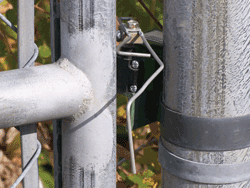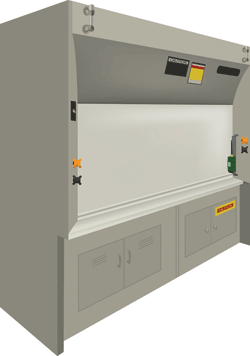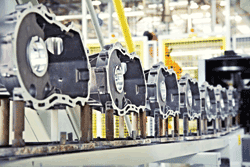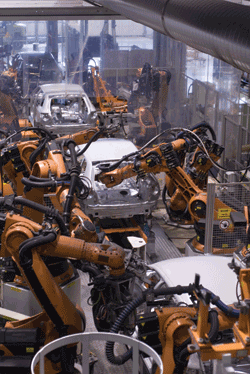A wireless paradigm for industry and manufacturing
Wireless technology is proven, and to get an idea of potential savings, here are three real-world examples from various industries
BY JOSEPH CITRANO,
Product Manager
Honeywell Sensing and Control
www.honeywell.com/sensing
There’s been a shift in thought processes centered on wireless networks in industry and manufacturing settings. A few years ago, manufacturing designers, builders, and engineers were questioning the ability, reliability and security of wireless systems for industrial applications. Today, with growing knowledge and comfort levels with wireless technology, the questions have migrated to the return on investment (ROI) achieved with wireless products. Specifically, how much can a wireless system save a company in maintenance, downtime or operational costs?
While cost-savings vary from application to application, wireless adopters are increasing bottom line profits. From reports of $4,000 per hour of saving factory downtime due to compromised wired systems, to accounts of 25 ft of wiring equaling the cost of a complete wireless system, the examples are numerous.
Since the development of the 802.15.4 Low-Rate Wireless Personal Area Network (LR-WPAN), developers have specified it for countless applications within various industries. It has opened new doors within industrial sectors as little or no underlying infrastructure is needed to adopt this wireless technology. This translates to low installation costs as long cable runs and hard wiring are eliminated. The lack of wiring and moving parts increase system reliability, decrease downtime and reduce maintenance; wear and tear isn’t an issue when wires are not present to flex, bend, or abrade.
The introduction of 802.15.4 also provided flexibility with data rates of 250, 40 and 20 kbps; addressing modes of 16-bit short and 64-bit IEEE; CSMA-CA channel access; automatic network establishment by the coordinator; fully hand-shaked protocol for transfer reliability; multiple channel configurations within the 2.4GHz ISM, 915HHz ISM and 868Mhz bands; and more.
Wireless technology is proven. To get a real idea of potential savings, real-world examples speak for themselves. Here are three from various industries.
Gate switch
An industrial plant in Illinois depends on rail track deliveries to keep production lines moving. For years, a hard-wired limit switch on a rail gate sounded appropriate indicators to notify employees of a train’s arrival. The aged wired system failed because the underground conduit had disintegrated, disabling the electrical connection to the switch. A replacement switch was needed quickly to resume the facility’s required procedures.
Initial research indicated that a hard-wired solution would require extensive trenching to replace old wiring, as well as contractor time and fees. The total cost could potentially reach $10,000, with up to 6 weeks of installation time and significant site disruption.
The company found an alternative with a wireless-enabled limit switch and monitor that could be used for position sensing and presence/absence detection. The switch is mounted on the gate (see Fig. 1 ) and an antenna cable is mounted on the plant’s railroad crossing sign. As a train enters the gate, the switch communicates with a monitor mounted inside the manufacturing facility, through another antenna mounted outside the building. The monitor then activates a computer control system which activates the facility’s safety sound and light indicators, notifying employees of a train’s presence.

Fig. 1: The ability to quickly and simply mount a wireless outdoor limit switch on a rail gate as shown resulted in significant cost savings.
The entire wireless system was up and running in just over 6 hours, and cost less than $1,000. There was no wiring, conduits, clips or connectors to purchase or install. There were no wire routing problems to solve, virtually eliminating location and placement restrictions of the limit switch.
Going wireless has reduced maintenance costs as well. Troubleshooting is simplified and system reliability is increased by eliminating issues that arise from switch wiring and connectors. The switch is simpler to replace as there is no disconnecting or re-attaching of wiring. In addition, battery costs are minimal because batteries last up to three years due to low power draw.
Fume hoods
A common fixture in medical settings, educational and scientific labs, fume hoods are local ventilation devices designed to limit exposure to hazardous or noxious fumes, vapors and dusts. Typically a large piece of equipment enclosing five sides of a work area, fume hoods are either designed to be ducted or re-circulated (see Fig. 2 )

Fig. 2: Like the unit seen above, fume hoods are typically a large piece of equipment with a work area enclosed on five sides that is accessible through a front door. With a ducted work area, leaving the hood door open can prove costly, so wireless monitoring can pay for itself rapidly.
Ducted fume hoods expel compromised air through an outside vent. In this configuration, fume hood doors left open actually pull conditioned (interior) air into the fixture, creating huge energy inefficiencies – and expensive heating or cooling bills. Several universities have actually reported annual energy losses of between $1,500 and $2,500 per hood per year. The energy savings – and environmental benefits – of eliminating open fume hood door situations can be astronomical.
One major university decided to install a wireless solution that would notify operators if a fume door was left open. A wireless switch placed on fume hood doors communicates with a receiver, which in turn, sends a wireless message to a computer server. Flexibility in design allows the system to be converted to an Ethernet connection if necessary and the message can be set up to communicate via e-mail, text, or smart phone. The wireless system was easy to install, and industry officials predict an ROI of less than one year due to energy loss savings alone.
Automotive factory floors
The stakes are high and finances tight in the automotive sector, which is why wireless solutions can provide big dividends. Manufacturers are using wireless technology in engine block transmission case machining centers, engine block boring tables, assembly lines, operator line switches, and more (see Fig ure 3 ).


Fig. 3: Wireless systems are already at use in automotive manufacturing faclities for engine block transmission case machining (top) and in robotic assembly lines (bottom).
Traditionally, hard-wired switches have had to battle wear and tear due to heat, constant wire flexing, metal shards and cutting fluids that degrade the wiring. This leads to expensive product replacement and factory downtime, which some factory managers calculate to be $100K per hour in lost revenue. In just two minutes, a downed assembly line can put factory production behind by an entire vehicle.
Cutting the cords
The advantages and flexibility of 802.15.4 LR-WPAN technology have enabled engineers to eliminate the wires in a variety of manufacturing and industrial applications. From remote, extreme or hazardous environments to environmentally-controlled factory settings, today’s wireless technology can handle the challenge.
The options and flexibility in component designs are available and the reliability, security and robustness are built in – and the transmission ranges can be selected to meet the need.
So, in effect, the only question that remains to be answered is, when are you going to cut the cords in your application? ■
Advertisement
Learn more about Honeywell Sensing and Productivity Solutions





